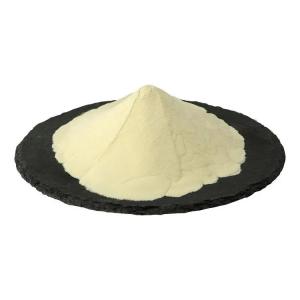Phosphatidyl serine is found in instant oatmeal.
Time:2025-08-11Phosphatidylserine (PS) is a naturally occurring phospholipid found in both plant and animal cells. It is commonly derived from plant-based sources such as soy or sunflower lecithin for use in food and nutritional applications. In addition to its use in supplements and functional foods, phosphatidylserine has gradually entered the realm of mainstream food products, including instant oatmeal. Its inclusion reflects a growing interest in enriching staple foods with multifunctional ingredients.
What Is Phosphatidylserine?
Phosphatidylserine is a key component of cell membranes and belongs to the phospholipid family. It contains both hydrophilic (water-loving) and lipophilic (fat-loving) elements, making it an effective emulsifier and functional additive in food processing. It is typically available in powder or oil-compatible forms, depending on the processing and end-use requirements.
Incorporation in Instant Oatmeal
Instant oatmeal products often contain a blend of oats, flavorings, sweeteners, and functional ingredients. Phosphatidylserine may be added to such formulations for various technical and formulation purposes:
Ingredient Dispersibility
Phosphatidylserine helps improve the dispersion of oil-based flavorings and additives in the oatmeal mixture, particularly when reconstituted with hot water or milk.
Emulsion Stability
In flavored or enriched oatmeals that contain powdered milk, plant oils, or other lipids, phosphatidylserine can contribute to the stability of emulsions, ensuring uniform texture and appearance.
Texture and Mouthfeel
Due to its phospholipid structure, phosphatidylserine can subtly influence the mouthfeel of instant oatmeal, providing a smoother, creamier consistency without the need for additional fats or thickeners.
Process Compatibility
Phosphatidylserine integrates well during the blending and drying processes used in manufacturing instant oatmeal, maintaining its stability under standard conditions of temperature and moisture.
Source and Production
Food-grade phosphatidylserine is usually produced by enzymatic modification of phosphatidylcholine derived from soy or sunflower lecithin. It is then purified and standardized to meet food safety and quality regulations. In oat-based products, it is typically blended as part of the dry mix.
Applications in Oat-Based Products
Beyond traditional instant oatmeal, phosphatidylserine may also be used in:
Instant oat drink powders
Pre-mixed oatmeal smoothie blends
Ready-to-eat oatmeal cups
Functional cereal mixes
Its ability to support both flavor dispersion and texture enhancement makes it suitable for a wide range of modern oat-based offerings.
Conclusion
The use of phosphatidylserine in instant oatmeal reflects a broader trend toward ingredient innovation in everyday foods. As food manufacturers look to combine convenience with enhanced sensory qualities and advanced formulation, phosphatidylserine offers a technically versatile option. Its presence in oatmeal helps support a consistent product experience while meeting evolving consumer preferences for more sophisticated food formulations.


 CN
CN





